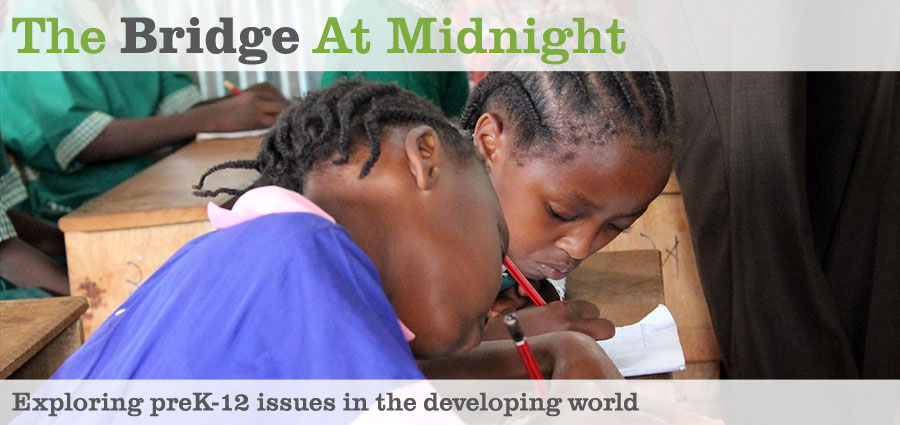Young Social Entrepreneurs
Posted: July 10th, 2013 | Author: Michael Goldstein | | No Comments »
Met a sharp high-school kid yesterday, wandering around the Harvard i-lab (they are generously hosting our Bridge Boston office for now, until we find a permanent home).
Arjun created Stoodle. It’s an online site that makes it easy to tutor a friend. There’s a space to draw stuff, a box for chat or video chat, etc.
I.e., instead of calling your high school buddy and saying “I’m stuck on problem #22” and then working it out over the phone, you click together onto his site, and work together there.
Of course I immediately wondered about Stoodle’s applications to our 50,000 pupils in Kenya. Presumably, there are lots of people in the world willing to be “tutor friends” even if they’re not “real friends.” People want to help — particularly when volunteer work can be contained to a very short burst of time and still be meaningful. That’s a very hard intersection to find: it’s easy to find people willing to donate small amounts of time, but hard to find micro volunteer opportunities that are actually helpful to others. Tutoring a kid who is hungry to learn and just “stuck” is often such an opportunity.
George Cigale, inventor of a successful company called Tutor.com, told me a year ago that his median session was something like 18 minutes. A high school kid (or his parent, or his school library) would pay one of Tutor.com’s “live” tutors to explain a tricky concept in algebra or physics at 4pm, while the kid was going through homework.
Now imagine the same idea — easy to click for a human when you get stuck — but for free. You combine Arjun’s platform with a social enterprise that builds up a massive volunteer corps.
Challenges:
*Stoodle runs on Flash, Arjun explained. At best, the Kenyan students have access to a family cell phone which runs on Android. So not yet compatible.
*The online tutoring experience at Stoodle is designed for a tablet or laptop, not a tiny phone screen. Our schools at Bridge have no electricity. Even if we had power, there’s not yet a low-priced enough tablet that we can afford for students. I do think prices are dropping fast enough that we’ll get there one day. Maybe 2 years.
It’s fun to see a young thinker like Arjun and his fellow high school buddies make their idea a reality. The i-lab is full of young entrepreneurs, many with social justice missions, whether they’re organized as non-profit or for-profit.
(Small world note: I met one of his co-founders when the kid was perhaps 6 years old. My wife Pru was visiting her college buddy Susan and her family in California. I vaguely recall we played a few holes on a par-3 course near their home; I hit an iron near the first green, and then the 6 year old hit a shot onto the green. Evidently Mav’s grown up to be a top golfer. I’m not surprised).
Stoodle is backed by the CK-12 Foundation.
I think the Kenyan Free Laptop Initiative — a hot controversy, whereby the government will provide free laptops to first graders, even though they have very little cash, and despite that the opposition party would prefer to use any available money for teacher salaries — is in part a dream to have lots of Arjuns, lots of young tech-savvy youngsters who might one day create the next Facebook and lift the economy.
Will the laptop effort work?
See here for a terrific write-up by a Kenyan software engineer, another by Will Mutua, and larger context (Peru) here.
And this: David Risher, founder of WorldReader, may have a better idea.
But however this laptop effort works out, the Big Picture is clear.
1. Technology hardware will keep getting better and cheaper.
2. Power solutions – batteries, solar, other – will keep getting better and cheaper. So will internet access.
3. Free technology tools like Stoodle will expand rapidly.
4. What’s left? The design of the blended learning school for the very poor, where talented adults plus technology tools generate a first-rate education.
That’s the kernel of the last project I designed at Match. Our small Boston team hopes to explore some of these ideas for the pupils of Bridge.


Leave a Reply